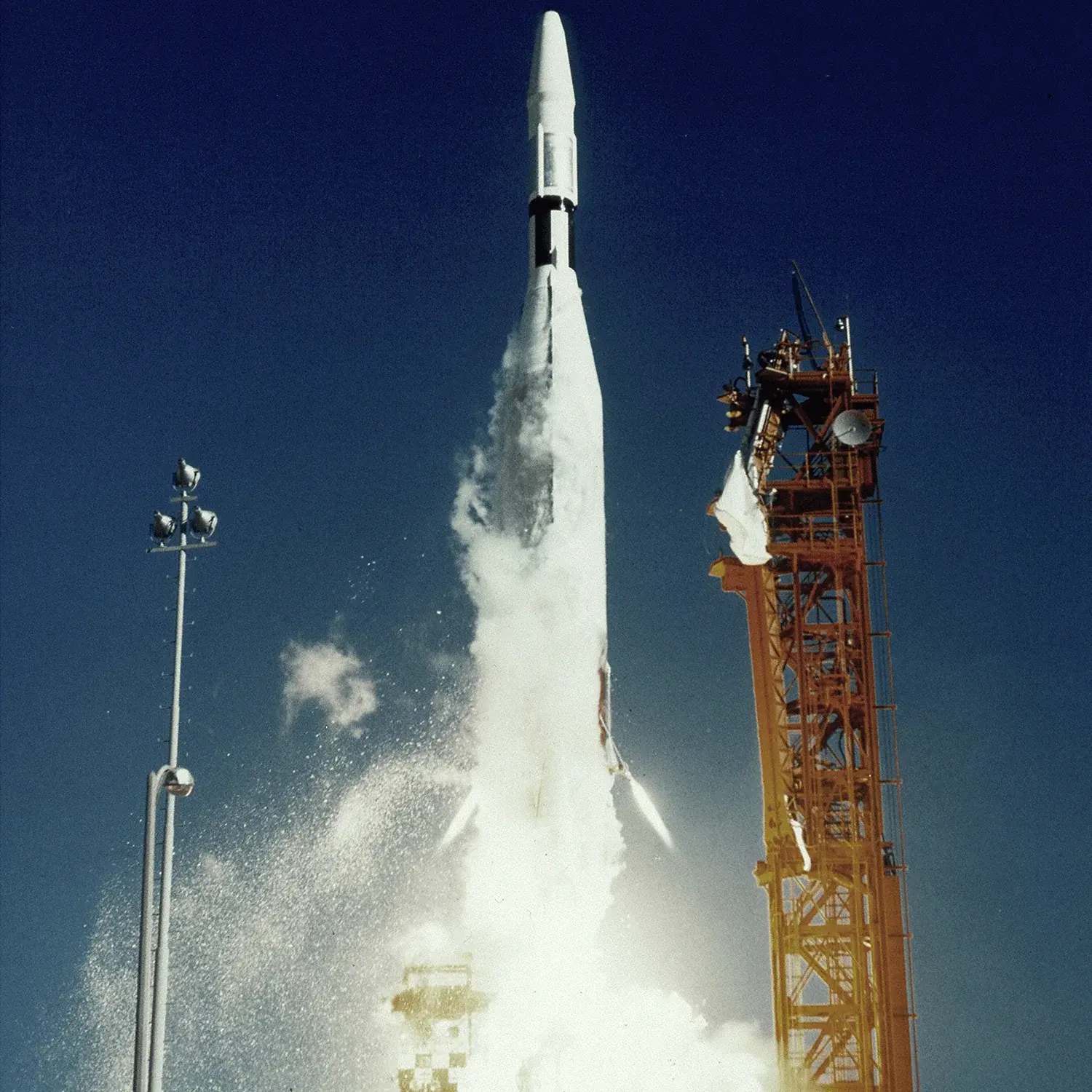Midas 5
Launch Success
Liftoff Time (GMT)
15:04:00
Monday April 9, 1962
Mission Details
Midas 5
The MIDAS Series 2 (Military Defense Alarm System) satellites, MIDAS 3, 4, and 5, were the second development models for the MIDAS early warning system. MIDAS Series 2 carried a new infrared payload built by Baird-Atomic, one that featured 175 detectors capable of sensing ICBM targets at a maximum slant range of 4200 nm, The payload was designed to scan at a rate of 6 rpm, a rate of rotation three times faster than the Series I payloads. The Agena-B upper stage of the Atlas-LV3 Agena-B launch vehicle was used as the spacecraft bus and provided power and attitude control to the MIDAS payload. The Agena-B was nearly twice the length of its Agena-A predecessor. The increased tankage and a new dual-burn rocket engine would permit reaching a planned circular polar orbit at an altitude of 3400 km, the orbit then considered most appropriate for an operational constellation of MIDAS satellites. Two deployable solar arrays were mounted on the aft equipment rack of the Agena-B to provide power. MIDAS 5, the third and last of the Series 2 flights carrying a Baird-Atomic infrared payload, lifted from Vandenberg AFB on 9 April 1962. The spacecraft achieve its planned polar orbit, stabilized properly, and the solar arrays extended and began generating the needed electrical power. Turned on, the infrared payload checked out during the first few orbits of the Earth. During the sixth orbit, a massive electrical power failure occurred aboard MIDAS 5, and all control over the vehicle was lost.
1 Payload
1,860 kilograms
Rocket

Launch Site
Stats
Atlas-Agena
14th
Mission
3rd
Mission of 1962
1962
12th
Orbital launch attempt
